This piece is part of a series remembering the life, career, and legacy of Helmut (Hal) Sonnenfeldt — a member of the National Security Council, counselor at the Department of State, scholar at the Johns Hopkins School of Advanced International Studies (SAIS), and Brookings expert.
Henry Kissinger aside, nobody in the U.S. policy establishment knew Germany better than Helmut Sonnenfeldt, the Jew from the small town of Gardelegen near Berlin, who managed to get out in time to Britain, then to the U.S. An anecdote highlights Hal’s profound grasp of Germany past and present: In the early 1980s, the Sonnenfeldts were vacationing in Little Dix Bay (on Virgin Gorda). On the beach, Hal spied a friend of mine, Gottfried von Bismarck, who looked like a young version of the great Otto. He walked up, pointed at his face and asked with an endearing grin: “Bismarck?” Taken aback, the descendant of the “Iron Chancellor” stuttered: “Uh, yes.” The former State Department counselor and the MIT graduate, now living in Hamburg, would become friends in the years to come.
Like Henry, another Jewish refugee, Hal was Hitler’s gift to the United States. Neither of these two close collaborators during the Nixon and Ford administrations was uncritical of the Third Reich’s West German successor. Indeed, they were as apprehensive as anybody else at the White House and State Department. Would the Federal Republic remain moored to the West or return to the Schaukelpolitik (seesawing between East and West) of the early 20th century? Would democracy continue to flourish — or perish once more between the extremes of the right and the left, as in the Weimar Republic?
The apprehension came naturally to a victim of Nazism — and would occasionally verge on suspicion throughout Washington’s foreign policy community. It flared especially during West Germany’s Ostpolitik under Willy Brandt, beginning in 1969. Eager for accommodation with the Kremlin, the architects of Ostpolitik, notably Brandt’s Svengali Egon Bahr, might just outflank the U.S. In an end run, they might concoct a reunification scheme that would alienate Germany from the West and leave Europe in German-Soviet hands. Though a hard-nosed realpolitiker who sought to leash Bonn and contain Moscow, Hal acted as mediator between Washington and its closest ally in Europe. His mission was to preserve American interests while keeping the Germans in the Western fold. That relationship was a pillar of U.S. grand strategy.
German fears were the mirror image of America’s. The Germans always suspected a grand bargain between Washington and Moscow that might reduce Europe to a superpower condominium. So, they had to be reassured. Still fluent in his native language, Hal kept stroking the nervous Germans: Such a “deal was hardly imaginable.” Moscow would never be granted “a veto over the West’s precautionary military measures.” Nor was Western Europe an American “bailiwick.” Stressing the principle, he asserted: “A modus vivendi must not be based [on an agreement] that turns Europe in a hostage of Soviet military power.”
So much for the “therapy” of edgy allies. Conversely, he tried to soothe American tempers in times of trouble. One such crisis, in May 1985, was Ronald Reagan’s visit to the Bitburg Military Cemetery to celebrate German-American reconciliation with chancellor Helmut Kohl. Alas, it turned out that the graveyard harbored the remains of Waffen-SS soldiers. How could an American president honor such war criminals with his presence? The House of Representatives voted 325 to 25 to recommend canceling the visit.
Yet Sonnenfeldt, the Nazi victim, reminded his compatriots of the geostrategic stakes by invoking the U.S. national interest: “This government, and Kohl as its leader, is an asset for the United States.” At the last moment, a trip to the Bergen-Belsen concentration camp was inserted into Reagan’s schedule, and the president did go to Bitburg, though only for eight minutes. It was a finely tuned balancing act, but it retightened the bond between the U.S. and its valuable “asset,” Helmut Kohl.
For all its emotional furor, Bitburg was just a side show in the multi-year drama, circa 1979 to 1987, over the “Euromissiles.” The Soviets had begun deploying nuclear-tipped SS-20 missiles that could reach all of Western Europe, but not the United States. The build-up posed a “separate threat” to America’s allies and raised the specter of “decoupling” America’s protégés from their big brother from across the sea. If not countered, NATO might have buckled under the strain. So the U.S. decided to restore seamless deterrence by fielding U.S. cruise and Pershing II missiles in the European theater.
This move set the stage for the largest-ever protest demonstrations in Western Europe, with millions, especially in West Germany, thronging the streets and squares of the deployment countries. Pacifism, neutralism, and anti-Americanism mingled with sheer angst. Europe would turn into a “shooting gallery of the superpowers,” as one famous line had it.
Hal, now outside the corridors of power, continued to play the wise statesman. Just as he stood always ready to remind his own government of America’s best interests, he drove home the same message to the Europeans. In the unending clamor over the Euromissiles, he chided the allies about their “lack of intellectual and political courage.” Rather than yielding to neutralist reflexes, they should wean the pacifists from the “mythologization” of arms control. Deterrence was better than unbounded fear.
The peace movement lost, and the missiles went in after 1983. Fast forward to the fall of the Berlin Wall six years later. Now that Germany, like Europe, was “free and whole again,” Sonnenfeldt gently encouraged reunited Germany to shed its American-made cocoon and to contribute to international security in line with its new-found freedom and might. It was time to “assume more [military] responsibilities in the international arena.”
Naturally, the Germans resisted. Why get into harm’s way, why trade their shiny BMWs for yesterday’s jackboots? In the days before Helmut Kohl, the Helmut Schmidt government had invented a convenient constitutional “Nein” to German military forays “out of area,” beyond NATO’s perimeter. So sorry, we cannot defy a cast-in-concrete constitutional taboo. Hal knew better. A diligent student of the German Verfassung, he correctly argued: “The letter of the constitution does not keep the Germans from participating in multinational security operations.”
Hal understood only too well that the constitution was being used as an alibi, and he was vindicated by the Constitutional Court, which ruled in 1994 that such ventures were legitimate and legal, as long as Germany did not forge ahead on its own. It still does not do so today. There are about 3,000 soldiers abroad, all the way to Iraq and Afghanistan. But every unit is encased in a multinational force. If Hal were alive today, he might have smiled: “I told you so.”
He never lectured, opening conceptual avenues instead. Always the “honest broker,” to invoke Bismarck, Hal also respected German sensitivities in the tug-of-war between the U.S. and the USSR, whether in office or at Brookings, which he had joined in 1978. The Germans were always worried about raising Russian hackles, harkening Bismarck’s counsel “to never cut the tie to St. Petersburg.” American policy makers did not always appreciate this enduring reflex. So at a particularly hot moment in the Cold War, Sonnenfeldt admonished Washington: “America has been reacting to Soviet expansionism with little enthusiasm for negotiations while demonstrating insufficient hope for détente.” Unwilling to rile the Russians, the Germans appreciated such talk from Helmut-turned-Hal.
He was always a subtle, not a heavy-handed thinker. Which leads back 40 years, to his State Department days and the “Sonnenfeldt Doctrine” that made him famous — or notorious. According to Washington lore, Kissinger was heard to quip: “There is no such thing as the Sonnenfeldt Doctrine, but if there were, do you think it would have been named after my subordinate?” On the right, Hal was accused of delivering Eastern Europe to America’s worst rival because he had opined that the Soviet Union should have “an organic relationship” with the East Europeans. A hue and cry went up. The “doctrine” was castigated as appeasement legitimizing Soviet rule from here to eternity.
When he said “organic,” Hal did not play with abandonment, let alone betrayal. He clarified his position in a conversation with a German journalist. He wanted a “natural relationship” between the Soviet Union and its East European satrapies. He wanted Moscow to show “tolerance” for its neighbors’ aspirations. It would entail “furthering their autonomy in order to serve Russian security interests better than fettering them by military power.” For the good of Europe, he wanted to lighten Eastern Europe’s “heavy fate” that had led to the “dramas of the past” — revolt and bloody suppression, as in Hungary and Czechoslovakia. He had in mind, as he said elsewhere, a kind of “Finlandization”: political autonomy at home that must not threaten the security of the Soviet Union. The idea was, so to speak, “empire lite.”
America’s conservatives never forgave Sonnenfeldt. But with hindsight, he was right — though 10 years too soon. Once the Reagan administration had turned aside the Euromissile challenge, détente and disarmament (plus, not to forget, Soviet Russia’s economic collapse) paved the way for Mikhail Gorbachev and Eastern Europe’s “velvet revolutions.” No tanks this time, as in Prague 1968. Evidently, Gorbachev got more than he had bargained for. He wanted to reform, not to relinquish his European empire. But conceptually, the “doctrine,” though premature, showed the way: relieve the pressure on the Soviet Union to soften its siege mentality. They still remembered U.S. “roll-back” slogans from the 1950s. A “natural relationship” might favor evolution without overturning the military balance.
Like Henry (“Heinz”) Kissinger, Hal (“Helmut”) Sonnenfeldt was a fervent American patriot, who early on set aside the trauma of his German childhood in order to build bridges to the country of his forebears. Certainly, neither romanticized the fatherland. Their biographies had been imprinted by the cataclysm unleashed by Hitler’s Germany. and they had internalized the lessons of 20th-century history. A murderous ideology joined to untrammeled power was the road to cosmic catastrophe.
Hence their lodestar was realpolitik at its best — not a zero-sum game, but a contest where all can win. To them, “never again!” meant balance, deterrence, and alliance-building, flanked by judicious diplomacy and democratic development. Evidently, such a strategy had to include Germany as Europe’s former and future central power, whatever its evil past. Would Germany have turned into a bulwark of democracy without America’s benevolent and far-sighted realism à la Heinz and Helmut? All the way to George H.W. Bush, the postwar decades were the glory days of American grand strategy, turning enemies into friends, tyranny into democracy, and dissolution into world order. Heinz and Helmut were Hitler’s gift to America, and surely to Germany as well that had forced them into exile.
Let’s close with a cheery anecdote. Hal was not only a consummate, but also a quick-witted diplomatist, never mind the brouhaha over the “Sonnenfeldt Doctrine.” At a meeting with Leonid Brezhnev at the Kremlin, the general-secretary took a fancy to Hal’s precious gold Omega wristwatch, offering a not so shiny Russian watch in exchange. To escape from the trap, Hal protested that his hands were tied, the Omega being a gift from his mother-in-law. The ploy worked wondrously. His new friend threw in a second time piece. It turned out that it was made from pure gold. To my best knowledge, no Westerner has ever outfoxed the Red Tsar on his own turf.
The Brookings Institution is committed to quality, independence, and impact.
We are supported by a diverse array of funders. In line with our values and policies, each Brookings publication represents the sole views of its author(s).


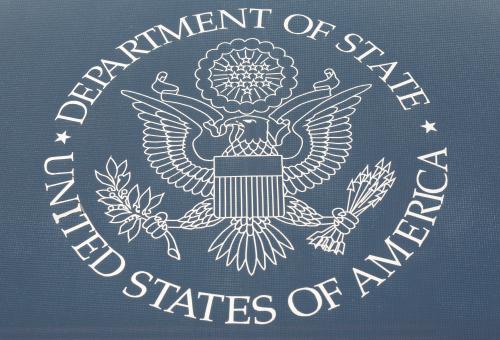
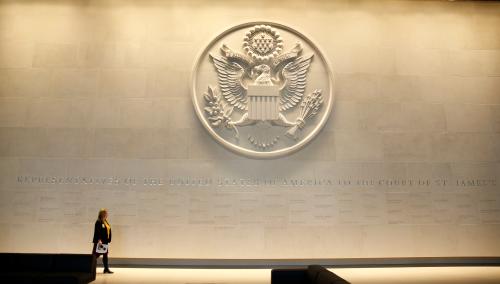
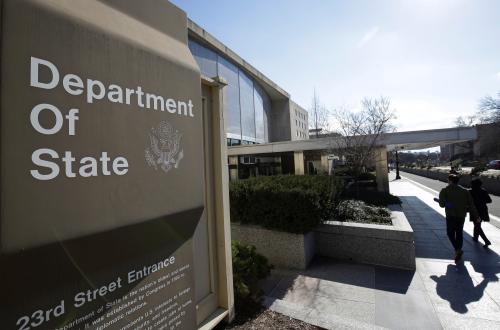
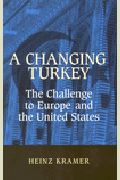
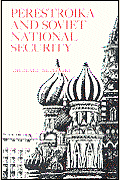




Commentary
Helmut Sonnenfeldt: Hitler’s gift to the United States, and to Germany
A personal reminiscence
October 17, 2019